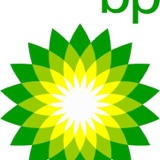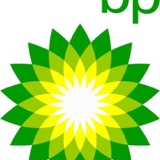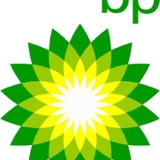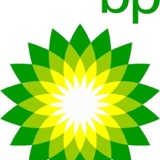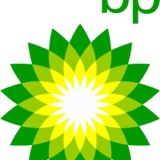Information
-
Document No.
-
Audit Title
-
Client / Site
-
Conducted on
-
Prepared by
-
Location
-
Personnel
1 : HSSE
-
Are safety rules applied within the inspection area?
-
Were samples transported in a safe manner?
-
Did the inspector show safety awareness?
-
Did the inspector wear a hydrogen sulphide monitor?
-
Did the inspector comply with contractor entry regulations for the site?
-
During the inspection, did the inspector intend to use grounding wire for gauging equipment?
-
Did the inspector comply with speed limits and limitations on the use of mobile phones and other electrical equipment?
-
Did the inspector observe good housekeeping rules?
-
Did the PPE as worn by the inspector conform to the minimum requirements appropriate to task?
-
Are inspection staff given both facility and task specific HSE training?
-
Was the inspector able to carry the required equipment without compromising safety from potential slips, trips and falls?
2 : Communications & Planning
-
Was a pre-inspection meeting carried out with relevant ship and shore personnel in attendance? Was the quantity and quality of the cargo to be transferred agreed upon?<br>
-
Did the meeting discuss potential hazards, safety, communications, activities etc.?<br>
-
Did the Inspector discuss the following:a) number of tanks and quantity of cargo to be transferred between each? b) previous cargoes and quality thereof? c) the current voyage and possible in transit movement of cargo? d) proposed loading and discharge rates? e) Tank coatings, heating coils, tank and pipeline preparation? f) Ballasting? g) Cargo/cargo, cargo/ballast segregation? h) Proposed cargo plan? <br>
-
Were signed and stamped copies of relevant documents exchanged between the Inspector and ship/shore personnel? <br>
-
Did the Inspector discuss BP requirements with ship's staff?<br>
3 Facilities & Operation
-
Does the inspection office have any sort of traceability with respect to field equipment proving and maintenance?
-
Are the periods of calibration for all measurement equipment comparable with:a) National Standards?b) BP Measurement Standards?
-
Did the Inspector arrive in good time so as to prevent delays in either ship or shore operations?
-
Has the inspection operation been accredited against an internationally recognised standard?
-
Does the office complete the input data into GCAS?
-
Prior to the start of an inspection event is the Inspector given a copy of all relevant instructions for quality and quantity information?
-
Is the inspection report completed and despatched in a timely manner?
-
Is there a formalised route for communicating product quantity and quality issues to the client (both within and out of office hours)?
-
Is communication between the inspection office and client (direct or indirect) effective and reliable?
4: Training
-
Have all Inspectors had IFIA training?<br>
-
Is there an appointed training supervisor and/or identified trainer(s)? <br>
-
Are there written training records for each staff member identifying the requirements of precision and bias have been met?<br>
-
Do staff attend external industry seminars, workshops, etc.?<br>
-
Did the inspector demonstrate a knowledge in Industry and BP standards?<br>
5 : Sampling
-
Is the type of sampling equipment, used by the Inspector, acceptable? <br>
-
Were the sampling procedures witnessed, suitable for the sampling required?<br>
-
Does the sampling technique ensure there is no change of quality of the sample for the proposed testing?<br>
-
Were all samples drawn, adequately labelled?<br>
-
Did the inspector use his own sampling equipment?<br>
-
For sensitive cargoes, was sampling compliant with RIICS Annex C?
-
If a shipboard sampler was used, did the Inspector discuss individual line flow rates, maximum expected rate, minimum rate and was there relevant information exchange to enable there to be safe and accurate operation of the sampler?<br>
-
Did the Inspector check that the sample receiver was clean and dry? Did he seal the container to prevent tampering? <br>
-
Was the sampler receiver installed so as to minimise the effect of climatic conditions on the sample?<br>
-
Was the sampler set up in flow proportional mode?<br>
-
Once functioning, was the sampler extracting sample only when there was flow ?<br>
-
Did the Inspector witness the input of the grab size, batch size and sample receipt size? <br>
-
If the performance factor was outside the permitted limit was a letter of protest issued and was the Inspector’s principals informed?<br>
6 : Metering
-
If Meter were used, did the inspector obtain opening and closing readings from either the meter head or the flow computer
-
Did the inspector ask for copies of meter tickets and relevant meter proving reports
-
Did the inspector ask for copies of the calibration certificates for PD meters
-
Were meter factors established
-
Was the proving checkedW
-
-
Were meter quantities compared to shore tank delivery
7 : Cargo Measurement - Shore side
-
Did the inspectors oil measurements comply with RIICS
-
If site equipment was used, did the inspector verify the accuracy of the equipment
-
Did the inspector coordinate and record a line displacement or line verification
-
If gauging for light products, was oil finding paste used
-
Was water finding paste used during water measurement
-
Did the inspector note the date and time of gauging and the tank number
-
Did the inspector measure and not the overall height
-
Were manual and auto measurements recorded
-
Were manual and auto temperatures recorded
-
Was the oil /water interface recorded
-
Were temperatures taken from multiple levels
-
Were manual measurements allowed, if not was this protested
-
Did the inspector check that the shore tank was outside of any critical zone during custody transfer<br><br>
-
Were auto gauges checked for correct functioning
-
Was the inspector allowed copies of calibration, auto gauges
-
Did the inspector ensure that the tank hatch was closed after gauging
8 : Cargo Measurement - Vessel
-
Were computer routines compliant with ASTM D1250
-
Did the inspector use his own equipment for temperature
-
If vessels equipment was used, did the inspector verify accuracy<br>
-
Were temperatures recorded for multiple levels
-
Were pipeline volumes obtained
-
Did the inspector read and record draft readings
-
Did the inspector measure : oil level, free water, temperature and reference heights for each tank
-
Were grade change cleaning methods checkedD
-
Did the inspector complete a bunker report<br>
-
Were samples taken for ROB/OBQ in excess of 10 cm
-
Were samples taken of free water in excess of 10 cm
-
Were cargo measurements taken in good time and without delaying operations
-
Were ROB/OBQ measurements taken from aft most points or multiple points
-
Was wedge information obtained
9 : Calculations
-
If the cargo inspector used a computer or programmable calculator is there traceability to show compliance with ASTM D1250
-
Is the information gathered from the inspection used to calculated quantities per individual ship's tank
-
Were calculation results compared with other voyage documentation to ensure consistency of calculation and for loss/gain comparison
-
Did the inspector calculate a VEF according to standards and use for ship / shore comparison
-
Were calculations completed in a timely manner
-
Did the inspector perform independent manual shore calculations
-
Did the inspector perform independent manual ship calculations using manual calibration tables
-
If the corrected ship / shore difference exceeded 0.25%, or the in transit difference exceeded 0.15%, did the inspector initiate further action. Such as re calculation, re checking measurements, issue letter of protest, inform BP
10 : Comments and Information
-
Add media
-
Add signature
